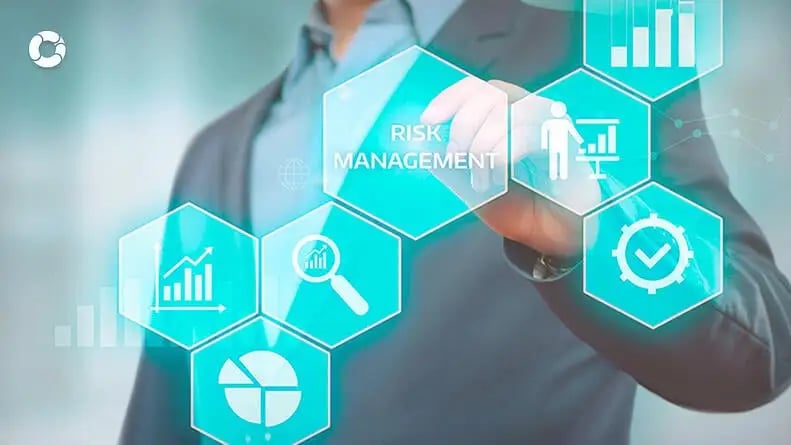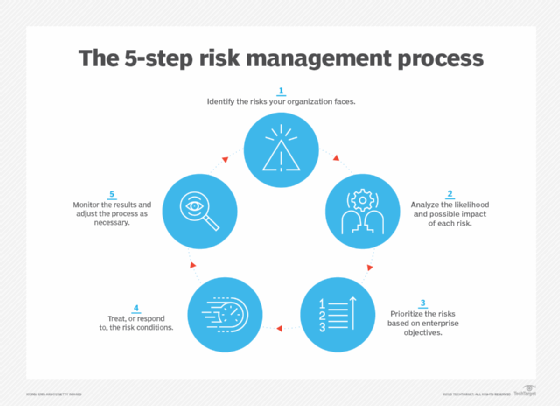How the Importance of Risk Management Facilitates Successful Project Outcomes
How the Importance of Risk Management Facilitates Successful Project Outcomes
Blog Article
Discovering the Value of Risk Management for Effective Decision-Making Techniques
In the elaborate globe of business, Risk Management emerges as a crucial consider the decision-making process. The ability to determine potential hazards and chances, and strategize appropriately, can spell the difference between success and failing. With tools such as SWOT and PESTEL, organizations are geared up to make enlightened choices, promoting resilience and flexibility in an ever-changing setting. Wondering just how this works? Allow's unload the characteristics further.
Comprehending the Principle of Risk Management
Risk Management, a critical component in decision-making, is typically misunderstood or oversimplified. Risk Management entails organized and self-displined approaches, utilizing information and informative assessments. From monetary uncertainties, legal obligations, tactical Management mistakes, to accidents and all-natural calamities, it attends to numerous risks - importance of risk management.
The Role of Risk Management in Decision-Making Processes
In the world of calculated preparation and service operations, Risk Management plays an essential duty in decision-making procedures. Risk Management thus ends up being an important device in decision-making, aiding leaders to make enlightened choices based on a comprehensive understanding of the threats involved. Risk Management offers as an essential element in the decision-making procedures of any kind of company.

How Risk Management Boosts Strategic Planning
In the context of strategic planning, Risk Management plays an essential duty. Launching with the recognition of potential risks, it even more prolongs to the application of Risk reduction measures. The role of Risk Management is dynamic but not static, as it requires continuous monitoring and adjusting of methods.
Determining Potential Risks

Carrying Out Risk Reduction
Risk mitigation approaches can vary from Risk evasion, Risk transfer, to run the risk of reduction. Each strategy should be customized to the specific Risk, considering its potential influence and the company's Risk resistance. Efficient Risk mitigation requires a deep understanding of the Risk landscape and the potential impact of each Risk.
Surveillance and Changing Approaches
Though Risk mitigation is an important step in critical planning, continual tracking and modification of these techniques is similarly important. It additionally supplies a chance to examine the success of the Risk Management actions, enabling adjustments to be made where required, additional enhancing strategic planning. Surveillance and readjusting Risk Management strategies is a vital component for enhancing an organization's strength and critical planning.
Case Researches: Effective Risk Management and Decision-Making
In the world of service and finance, effective Risk Management and decision-making frequently act as the columns of prosperous enterprises. One such entity is an international oil firm that minimized financial loss by hedging versus fluctuating oil costs. In another instance, a technology startup prospered by identifying and approving risky, high-reward methods in a volatile market. An international bank, faced with regulative unpredictabilities, effectively browsed the circumstance through proactive Risk analysis and vibrant decision-making. These situations highlight the worth of sharp Risk Management in decision-making processes. It is not the absence of Risk, however the Management of it, that typically sets apart effective firms from not successful ones. These cases underscore the essential duty of Risk Management in calculated decision-making. importance of risk management.
Tools and Strategies for Efficient Risk Management
These devices, such as Risk signs up and heat maps, aid in reference determining and examining potential threats. Risk response strategies, a vital part of Risk Management, include accepting, staying clear of, moving, or mitigating threats. With these tools and methods, decision-makers can navigate the complicated landscape of Risk Management, thus facilitating informed and effective decision-making.
Future Fads in Risk Management and Decision-Making Strategies
As we check out the large landscape of Risk Management, it becomes noticeable that the methods and tools utilized today will certainly remain to advance. Future patterns aim in the direction of an enhanced dependence on modern technology, with expert system and artificial intelligence playing substantial functions. These innovations will make it possible for companies to predict possible dangers with better accuracy and make more enlightened choices. Additionally, there will be an expanding focus on resilience, not simply in handling risks however also in recuperating from damaging scenarios. Lastly, the principle of Risk society, where every member of an organization is conscious and associated with Risk Management, will certainly get more importance. These fads advertise browse around this site an even more aggressive and comprehensive technique in the direction of Risk Management and decision-making.
Conclusion

Risk Management therefore ends up being a vital device in decision-making, helping leaders to make enlightened selections based on a detailed understanding of the dangers entailed. Risk mitigation approaches can vary from Risk avoidance, Risk transfer, to take the chance of reduction (importance of risk management). Reliable Risk mitigation requires a deep understanding of the Risk landscape and the potential effect of each Risk. Risk feedback methods, a key element of Risk Management, entail accepting, avoiding, moving, or mitigating dangers. The concept of Risk society, where every participant of an organization is conscious and included in Risk Management, will certainly get a lot more importance
Report this page